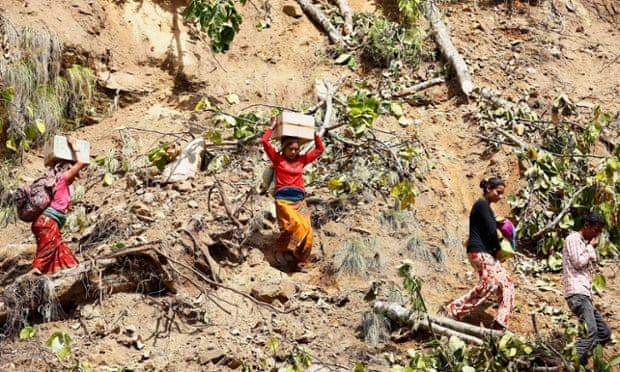Terrawatch: A continental pile-up

For geologists the devastating magnitude 7.8 earthquake that rocked Nepal just over a week ago, came as no surprise. Nepal sits above a massive continental pile-up, with India ploughing into Asia at a rate of around 4cm per year. Running east to west is a 1000km-long earthquake fault, where the continents meet. And every few decades the strain accumulated from the continental collision is released by a major earthquake on that fault. The last one – a magnitude 8.1 in 1934 – razed around a quarter of Kathmandu to the ground and killed 17,000 people.
Just over one year ago I was in Nepal following a team of geologists, who were racing against the clock to try and determine which segment of the fault would move next. Working in a location to the southeast of Kathmandu, Paul Tapponnier, an earth scientist at the Earth Observatory of Singapore, and his team dug trenches across the fault and used charcoal to date when it had moved. They were able to show that this segment of fault was responsible for the 1934 earthquake and, prior to that, a major quake in 1255.
Earlier this year Tapponnier and his team returned, this time working on the segment of fault lying to the southwest of Kathmandu. They discovered that it last ruptured in 1344, possibly primed by the 1255 earthquake on the neighbouring segment of fault, 89 years earlier. Alarm bells immediately rang, as they realised the 1934 earthquake may have transferred strain to this segment, and that history could repeat itself very soon. Sadly the earthquake on Saturday 25 April proved them right.







Follow Us!